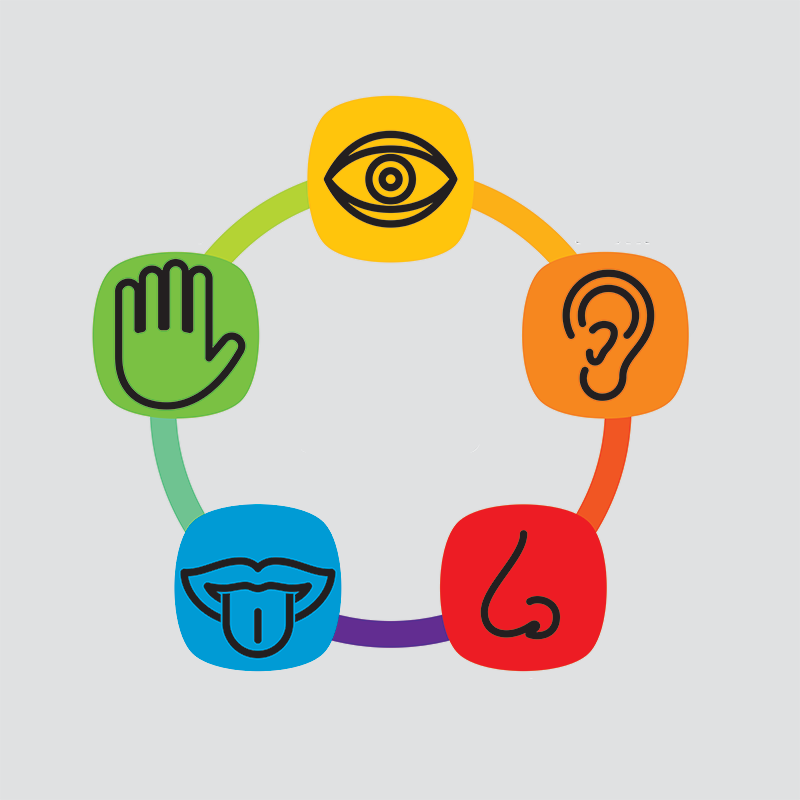Today, marketing has been placed in a new position, and the investigation of new scientific topics and concepts has become very important in modern marketing, and it is the experience created for marketers during the process of buying and consuming goods that is decisive. Therefore, we see the important role that the five senses play in the world of marketing, which create experiences that affect the purchase decision and customer loyalty. Companies that interact well with consumers and customers provide them with a memorable sensory experience that leads to the formation of a worthy position for the company, products or services in the mind of the customer. The sensory marketing framework is based on the assumption that the company must reach the five human senses at a deeper level than the mass marketing findings and interfaces.
Sensory marketing is a type of marketing that engages the consumer’s senses and affects his behavior, and can be used to influence the unconscious memory that shapes the consumer’s perception and his mental opinions about the product, including quality, beauty, innovativeness, etc. It makes the day and implies understanding the way of perception and feeling and their role in the customer’s behavior. Marketers around the world have expanded the path of marketing development to focus on human emotions in order to accept and coordinate with the mentioned changes. Emotions on various marketing parameters, including retail preference and choice, store image, time spent in the store, shopping satisfaction, product or service satisfaction, hedonic and consumerist shopping value, consumer decision-making style, spending amount and consumer desire. have an effect Many consumers use different types of products based on their feelings, mental images and emotions that the products create.
The five human senses can play an important and complex role in distinguishing between several brands. The integrated use of senses is usually neglected in business promotion activities. Advertising campaigns on the radio target our auditory sense, on store shelves, television and billboards, our visual attention is targeted. In recent years, advertising campaigns have targeted the use of other senses, including smell, taste and touch. In fact, sensory marketing is about how to arouse the emotions of the audience to increase their desire to buy a service or product.
From a research point of view, sensory marketing requires the understanding of feelings and perceptions that are applied in consumer behavior. Sensory marketing is the application of emotion understanding and perception in the context of marketing for consumer perception, cognition, emotions, learning, preference, choice or evaluation. Sensation and perception are the processing stages of the senses. Sensation is when a stimulus hits the receptor cells of a sense organ that is biochemical (and neural) in nature. Perception is awareness or understanding of sensory information. Krishna (2010) defines sensory marketing as “marketing that engages consumers’ senses and influences their behaviors”. It can even be extended to say that sensory marketing involves “marketing that engages consumers’ senses and influences their perceptions, judgments, and behavior.”
The field of sensory marketing presents many questions for managers and researchers. According to Peck and Childers (2008), of the 81 sensory studies in consumer behavior focusing on taste, touch, smell, and hearing, more than one-third have been published in the last 5 years. It is clear that sensory perception and sensory marketing is a growing field and much research remains to be done. The focus of this review is to summarize some of the research that has been done on the senses while pointing out gaps in the literature where more work is needed (Peck & Childers, 2008).
In the traditional processes of consumer decision-making, decisions and logical inferences are made based on the learning-feeling process. However, a new sensory branding model based on intuitive and unconscious information processing suggests that consumers first sense, then feel or think, and finally act. Understanding how our senses work is especially important in branding. Creating a sensory, emotional and logical connection with consumers can stimulate their senses and create attraction for them, thus making marketing programs more effective (Hill, 2003).
Sensory marketing studies offer a new way to embrace how the human senses shape a person’s experience. Similarly, it recommends strategies on how a company differentiates and develops its unique product and brand identity through the involvement of human senses. Unlike conventional marketing studies, this one puts the five senses front and center and emphasizes the importance of appealing to each sense when marketing to customers. The five senses, smell, touch, taste, sight and sound have a great impact on the way consumers buy and experience products, services, and brands. Creatively, sensory marketing affirms how the five human senses are involved in a company’s strategic marketing. In the same way, it shows that a company should consider the five human senses as the starting point in action and thus provide customers with an absolute and unique experience.
Source: Xarfa

